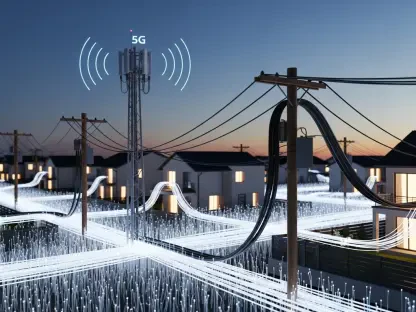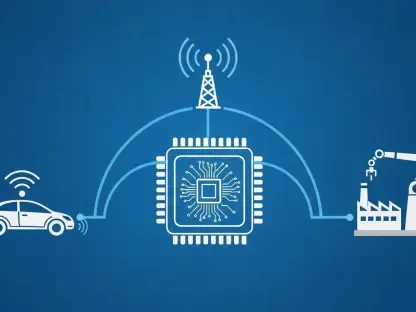In the heart of Niagara-on-the-Lake, Ontario, a seemingly routine proposal for improved cellular service has ignited a firestorm of controversy among local residents, turning a simple infrastructure project into a heated community debate. Near the entrance of Nelson Park on Ricardo Street, Signum Wireless, through their contractor Fontur International Inc., has put forward a plan to construct an 18-meter cellphone tower, aiming to address a significant coverage gap, especially for Freedom Mobile users. However, what was intended as a straightforward infrastructure upgrade has instead become a flashpoint for community dissent, with many in the nearby King’s Point neighborhood and beyond voicing strong objections. The tension came to a head during a recent public consultation at the NOTL Community Centre, where frustration and resistance dominated the conversation. This situation underscores a broader clash between technological necessity and community values, raising questions about how such projects can balance corporate goals with local priorities.
Community Concerns Over the Proposed Tower
Visual and Aesthetic Impact on a Scenic Area
The proposed cellphone tower near Nelson Park has sparked significant backlash due to its potential to disrupt the visual charm of a beloved local landmark. Many residents, particularly those from the Old Town area, argue that an 18-meter structure at the park’s entrance would be an unsightly blemish in a scenic zone frequented by both locals and tourists. During the public meeting, attendees expressed dismay over what they described as an “eyesore” that could detract from the natural beauty and historical character of the neighborhood. There was also widespread criticism of the visual simulations provided by Signum Wireless, which many felt failed to accurately represent the tower’s real-world impact on the landscape. The fear is that such a prominent installation could alter the area’s aesthetic appeal, a key draw for the community and visitors alike, turning a place of tranquility into a reminder of industrial encroachment.
Beyond the immediate visual concerns, there is apprehension about the long-term implications of the tower’s presence. Residents highlighted the possibility of future height increases, permitted under federal regulations by up to 25%, which could exacerbate the visual intrusion. Although municipal planner Lucas Cuff noted that such adjustments are rare, the mere potential has fueled distrust among locals who feel that once erected, the structure might evolve in ways they cannot control. Additional worries include the tower’s proximity to densely populated residential areas, raising questions about how it might overshadow homes and communal spaces. This blend of immediate and speculative concerns has solidified opposition, as the community grapples with balancing the need for modern connectivity against the preservation of their surroundings’ inherent charm.
Doubts About Location and Necessity
Another major point of contention revolves around the chosen location for the tower and whether it is truly necessary at the proposed site. Many residents, including vocal critics like Don Dinnin and Catherine Cornell, have questioned why Nelson Park was selected over other potential spots, such as the old municipal hospital site, which was ultimately dismissed due to unsuitable elevation. Skepticism abounds regarding the assertion that this specific location is the only viable option to close the coverage gap along Ricardo Street. Alternative technologies, such as Bell Mobility’s small cell network already operational in parts of Old Town, were suggested as less intrusive solutions, though Cuff countered that small cells would not provide adequate service for the area’s needs. This has left many feeling that the decision prioritizes corporate convenience over community well-being.
Further fueling the debate is the perception that the tower primarily addresses Freedom Mobile’s coverage issues, a burden some residents argue should not fall on their neighborhood to solve. The sentiment, articulated by figures like Cornell, is that while improved cellular service is desirable, the current proposal feels like an imposition rather than a collaborative solution. Concerns about environmental factors, such as flooding risks at the Nelson Park site, were raised, though Cuff assured attendees that the structure would be designed to withstand such events. Despite these reassurances, doubts linger about whether all possible alternatives were thoroughly explored, leaving the community unconvinced that this location is the best or only answer to the acknowledged service gap. The lack of consensus on necessity continues to drive a wedge between the project’s proponents and local stakeholders.
Procedural Frustrations and Transparency Issues
Lack of Genuine Engagement in the Consultation Process
The public consultation meeting held at the NOTL Community Centre, intended as a platform for dialogue, instead became a lightning rod for resident frustration over perceived procedural shortcomings. Led by municipal planner Lucas Cuff, the session was marked by interruptions and accusations that the event was merely a formality rather than a meaningful opportunity for input. Attendees voiced anger over the absence of senior executives from Signum Wireless, leaving Cuff to bear the brunt of criticism without direct representation from the company driving the project. This gap in accountability intensified feelings of being sidelined, as residents felt their concerns were not being addressed by decision-makers with the authority to effect change, highlighting a disconnect in how the consultation was structured.
Adding to the discontent was the revelation that municipal governments hold no authority over cellphone tower approvals, which fall under federal jurisdiction. This clarification, while factual, did little to ease tensions, as local councilors and residents alike—including Gary Burroughs, Sandra O’Connor, and Andrew Niven—challenged the implication that the town endorsed the site. The procedural reality left many feeling powerless, as their input appeared to carry little weight in the broader decision-making framework. Calls for an extension of the consultation period beyond the initial deadline were made, reflecting a desire for more time to deliberate and explore alternatives. This pervasive sense of exclusion from a process directly impacting their community has only deepened the opposition to the proposed tower.
Broader Implications for Trust and Accountability
The procedural grievances extend beyond the specifics of the meeting to broader issues of trust and accountability in infrastructure projects. The hostility displayed during the consultation underscores a fundamental rift between the telecommunications company’s objectives and the community’s expectations for transparency. Residents expressed skepticism about the data presented, including assurances that radiofrequency emissions would remain well below harmful levels and that property values would not be negatively affected. While Cuff provided supporting evidence for these claims, the lack of direct engagement from Signum Wireless executives left many unconvinced, fostering a perception that corporate interests were being prioritized over local voices in a way that felt dismissive.
This situation also raises questions about how future projects might navigate similar community resistance. The call for extended consultation reflects a collective demand for a more inclusive approach, one where residents feel their perspectives genuinely influence outcomes. The tension between federal oversight and local input remains a sticking point, as does the challenge of balancing technological advancements with community values. Looking back, the meeting revealed not just opposition to a single tower, but a deeper yearning for processes that prioritize dialogue over unilateral decisions. Moving forward, stakeholders on all sides might consider frameworks that better integrate community feedback from the outset, ensuring that projects like this one address coverage needs without alienating those most affected by their implementation.









